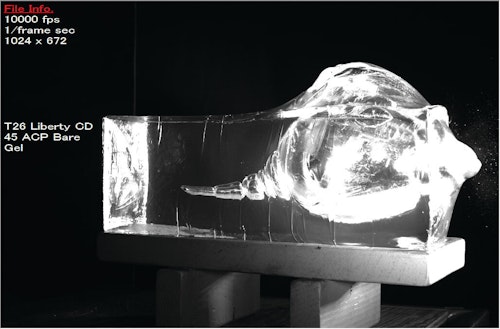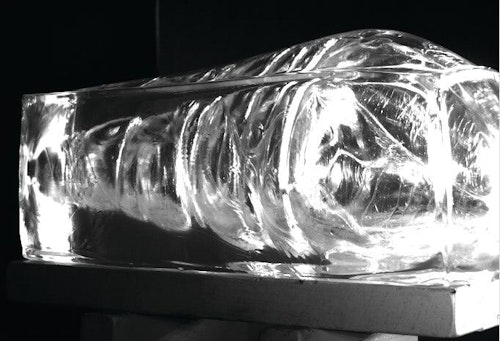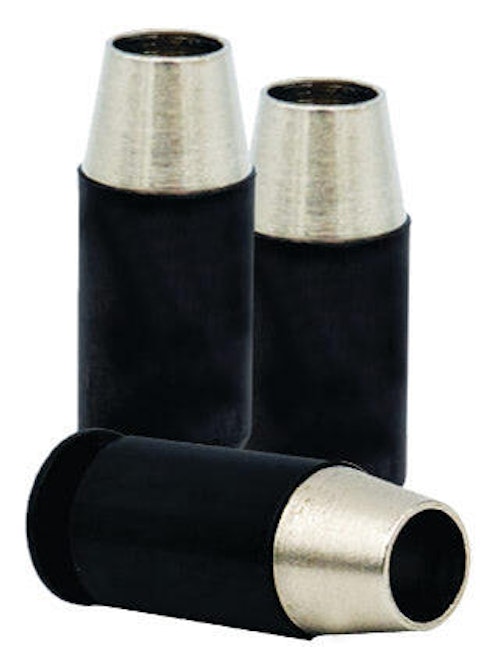In the never-ending debate on which ammunition is better for this or that, arguments often center around a few key points: speed of bullet vs. size of bullet, type of bullet and cartridge construction.
For those in the sub-topic of ammunition for personal defense — where handguns make up the main vehicle for delivering a bullet to a target — physics has a more significant role to play.
What does more damage to a target, smaller bullets at higher speeds, or bigger bullets at lower speeds? As for capacity, do you want more smaller cartridges or fewer larger cartridges? And what cartridge / handgun / shooter combinations are most consistently accurate?
Sometimes, it depends. And often it depends on very subjective factors not easily replicated — level of shooter stress, condition of the handgun, environment, and so on. Ammunition manufacturers know all these things and so do you as retailers. And of course your customers have their viewpoints — everything from “Five to stay alive” to “Make mine a nine” to “If it was good enough for my granddad in World War II, it’s good enough for me.”
New Developments
Every now and then, however, the shooting industry enjoys a spark of innovation that moves our understanding and experience in interesting directions. While it may be difficult to keep up on all the innovations and all the related details, we’ll provide you with a look at the ammunition being produced by Bradenton, Florida-based Liberty Ammunition, which the company simply claims is faster, hits harder, and is lighter to carry.
Marketing taglines aside, Liberty Ammunition CEO Gary Ramey says the company has been developing ammunition since 2005, has designed ammunition for the U.S. government, and owns over a dozen patents. What really gets attention is his claim that Liberty’s “9mm hits harder than everyone else’s .45 ACPs.”
According to Ramey, Liberty Ammunition agrees in principle with the findings of Col. Martin Fackler, MD, of the U.S. Army’s Wound Ballistics Laboratory. According to Fackler, some “…studies ranked bullets solely according to the temporary cavity produced in ordnance gelatin. They assumed that incapacitation of the human target by a given bullet is directly proportional to temporary cavity size.” But, Fackler continues, “No physiologic mechanism was even postulated for this supposed effect — much less proved. Temporary cavity size for a given bullet can be increased very simply by decreasing bullet weight and increasing velocity. … The critical consideration is that the bullet produce its permanent tissue disruption to sufficient depths to ensure major vessel disruption from any angle.”
High-Velocity Transfer
“Faster” is another way to say “higher velocity” and Ramey provides some foundational physics to help make the point about Liberty’s design goals. He says energy is defined as Ek=½mv2, or EK= 1/2 mass (or weight) x velocity squared). Now factor in how the The Sporting Arms and Ammunition Manufacturers' Institute (SAAMI) translates kinetic energy into pound-feet: E=(W*V2)/(14000*gc). This drives Liberty’s worldview that velocity is more important for transferring energy to the threat.
Ramey goes on to point out the issues related to bullet velocity; facts which coincide with Fackler’s findings. Mainly, the higher the velocity of the bullet, the more likely it is to travel through a target (instead of staying within it), creating a temporary wound channel (instead of a permanent wound channel) and, ultimately, losing energy because it over-penetrated (instead of depositing that energy inside the target). Of course, a bullet that travels through a target becomes a potential threat to persons or property you don’t intend to hit. “So you need to find a way to get the bullet to stop,” Ramey says.
That’s, of course, where bullet design is key. According to Ramey, various bullet types have different effects on a target: Ball or target ammo creates a temporary wound cavity. Hollow points open up in the front of the cavity and create a wider wound cavity. But, he says, “They travel through and exit. And energy is lost.”
To deliver all the energy, a bullet needs to stop in the target and Ramey explains how Liberty Ammunition ruptures in the bottom of the cavity, creating terminal damage and transferring all the energy into the target. As a result, there’s “No ‘flesh wound,’ no over-penetration; just terminal damage to stop the threat.”
Ramey says Liberty Ammunition’s “tissue disruption projectile design” includes the following:
• Hardened copper alloy (non-lead)
• Thin consistent walls that rupture at the base
• Lighter weight to carry
• Coned for strength and penetration
• All energy transferred to the recipient (minimal over-penetration)
This means that Liberty bullets create a permanent wound channel as the bullet ruptures in soft tissue, Ramey notes. Further, the high velocity of the bullet stretches the tissue beyond elasticity, creating an incapacitating shock, all while achieving penetration requirements.
For some of you, this may not be new information in terms of ballistics, and other ammunition manufacturers do significant research and development in order to find the balance of velocity, penetration and bullet weight to maximize energy. But Ramey says this level of design and engineering is costly. “It’s easy to take a solid object (a bullet) and put a drill hole in it and ship it. And some believe that it’s more effective,” he says. “It’s more expensive to drill copper rods and cone the front of the bullet for penetration — what Liberty does in order to deliver a faster, harder-hitting bullet.” This, says Ramey, occurs in all the Liberty ammunition across calibers.
Easier To Carry
Since Liberty Ammunition’s bullet designs use relatively lighter-weight bullets, that means it is less burdensome to carry. This means less user fatigue over time, which can result in being able to carry the same amount of ammo longer or for the ammo load to have fewer adverse physical effects on a user. In any case, military and law enforcement personnel who are already counting ounces in their load-out gear can enjoy some weight savings. Same goes for civilians who carry a concealed handgun, regardless of the caliber carried.
Liberty Ammunition’s innovations are worthwhile topics for you, your sales staff, and your customers to consider. At the least, you can demonstrate your knowledge of what is happening in ammunition innovation and help your customers move beyond some of the antiquated arguments and uninformed notions for preferring one caliber over another.









